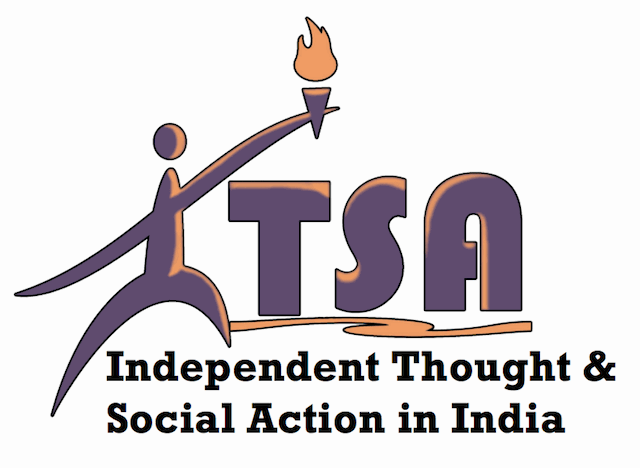Anyone who has read E.M. Forester's A Passage to India will be familiar with Adela Quested's continual desire to "see the real India."
Throughout my time here I have been attempting to understand why, exactly, the "real India" is so elusive. No one could show the impatient miss Quested the truth she was searching for, so in her stead I am investigating her failure (never mind that she's a fictional character).
Ahmedabad is, by India's standards, a pretty calm city. The traffic is crazy, but there's no alcohol allowed here, so credit goes completely to the citizens. Every visible piece of asphalt is an opportunity; people, cows, dogs, two-wheelers, and rickshaws weave in and out of traffic as though they are on a loom, although any fabric they produced would be very tangled indeed (perhaps that's why the textile industry is migrating south).
Women ride motorcycles, wearing scarves and sunglasses to cover their skin; whole families can be seen on the back, shoulders cradling sleeping children. Women in bright orange saris sit in the back of trucks that read "horn ok please."
People's faces are weathered, brows furrowed. They don't look except to stare, some excitedly, others suspiciously. At times they exude a sense of fatigue. When beggars ask for money people look away, an expression of forced apathy on their faces. It is too much to see the child in the arms of these women, to feel a sense of empathy, because that is where the real expenditure lies, not in the pitiful sum of ten rupees that they ask for. To care for one would mean having to care for all, and so people squint uncomfortably and fix their gazes anywhere else.
Why couldn't Adela discover the key to India? Because no one possesses it. No one is India – or its gatekeeper for that matter. The narrative of every citizen is so different that there is no way to understand the conglomerate force of energy that drives everything here.
The starkest contrast that I have seen here so far is that of poverty and wealth, and not just in the monetary sense. There is an abundance of life everywhere you look, but at the same time a paucity of it.
Not a second is wasted. Every breath of fresh air, every sidewalk, every storefront is used constantly. Ahmedabad is completely saturated.
India bore this city, spending itself continuously in the form of mangoes and monsoons. But its populace is spreading far faster than can be contained. People and animals blossom, yawning into the dust. With pluck and tenacity they work to coax bungalows out of the trash and shrubs, to carve patches of grass from this exhausted land.
Those who succeed are able to recline in the absence of chaos; they have tamed (lizards aside) the small plots on which they live. Those who do not must continue on in the heat. Like their predecessors they tumble forth, swept away by the inertia of Ahmedabad.
Throughout my time here I have been attempting to understand why, exactly, the "real India" is so elusive. No one could show the impatient miss Quested the truth she was searching for, so in her stead I am investigating her failure (never mind that she's a fictional character).
Ahmedabad is, by India's standards, a pretty calm city. The traffic is crazy, but there's no alcohol allowed here, so credit goes completely to the citizens. Every visible piece of asphalt is an opportunity; people, cows, dogs, two-wheelers, and rickshaws weave in and out of traffic as though they are on a loom, although any fabric they produced would be very tangled indeed (perhaps that's why the textile industry is migrating south).
Women ride motorcycles, wearing scarves and sunglasses to cover their skin; whole families can be seen on the back, shoulders cradling sleeping children. Women in bright orange saris sit in the back of trucks that read "horn ok please."
 |
| At some point someone must have realized, but probably didn't have the heart to mention anything, considering that it's written on the back of almost every large vehicle here |
Why couldn't Adela discover the key to India? Because no one possesses it. No one is India – or its gatekeeper for that matter. The narrative of every citizen is so different that there is no way to understand the conglomerate force of energy that drives everything here.
 |
| Almost getting run over by a cow in the old city seems tame compared to the stampede that ensues every time a bus stops |
Not a second is wasted. Every breath of fresh air, every sidewalk, every storefront is used constantly. Ahmedabad is completely saturated.
India bore this city, spending itself continuously in the form of mangoes and monsoons. But its populace is spreading far faster than can be contained. People and animals blossom, yawning into the dust. With pluck and tenacity they work to coax bungalows out of the trash and shrubs, to carve patches of grass from this exhausted land.
Those who succeed are able to recline in the absence of chaos; they have tamed (lizards aside) the small plots on which they live. Those who do not must continue on in the heat. Like their predecessors they tumble forth, swept away by the inertia of Ahmedabad.


No comments:
Post a Comment